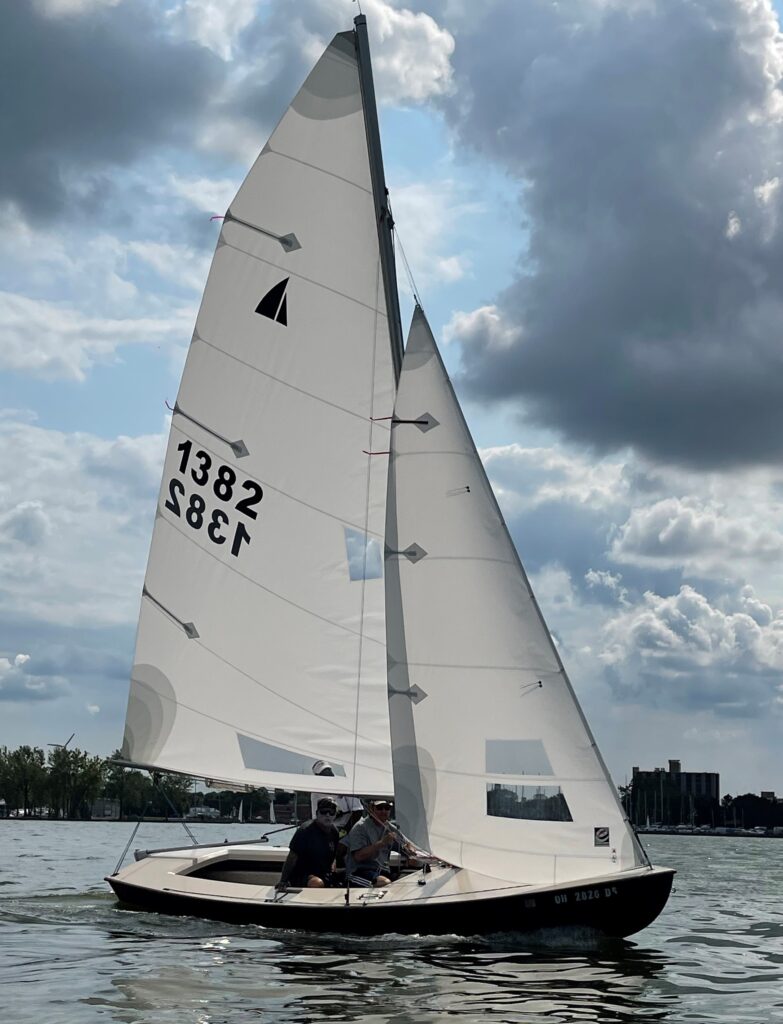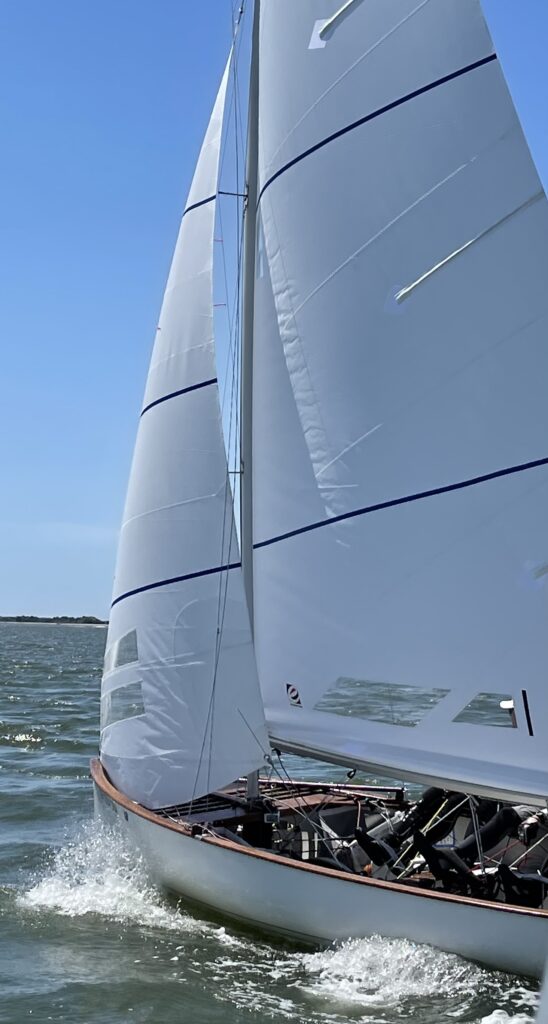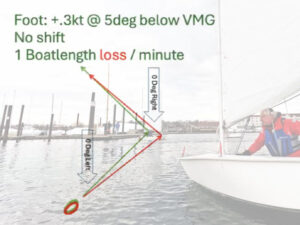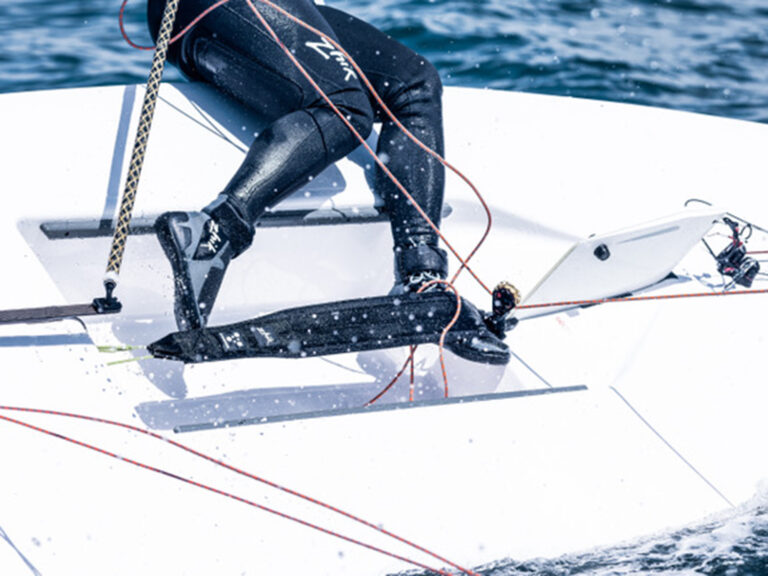
Many one-design classes, and some bigger boats, are fortunate to have convenient guides to help get the jib trimmed properly and consistently. Some of us use tape marks on our spreaders or marks on our splash rails and jib sheets so we have a ballpark placement for sheet tension after every tack.
While these guides do help us achieve our initial sheet trim quickly, they don’t necessarily key on the trim points that matter the most. Our leech telltales are really what we should be paying attention to most.
What exactly are leech telltales telling us? On the mainsail, the top telltale is telling us that the flow off the leech is fair and even off both sides of the sail. Often (depending on the boat and conditions) the mainsail will be trimmed hard enough so that the top telltale will be stalled when the boat is set up in “point mode.” Jib trim, on the other hand, is rarely set up with anything other than constant flow on those telltales.
Our jib leech telltales provide us with a gauge on how the wind is flowing through the all-important “slot,” the open area between the mainsail and jib. When the slot is too narrow the telltales will stall. Oftentimes, there will be backwind in the main, a bubble at the luff area of the main is an indication that the slot is too narrow. While jib sheet tension has the greatest effect on the slot and the jib leech telltale flow, other trim adjustments can be contributing factors as well.
“Using your jib telltales to check what’s happening in the slot will help you maintain the right balance between the main and jib, often resulting in the boat and helm being perfectly balanced.”
For example, if the main is eased in a set of waves, or in a gust when the traveler is eased to leeward, the slot will be narrowed and the telltales will stall, dictating that an ease on the jib sheet is necessary. An inhauler jib-system, or weather sheeting will also impact flow through the slot. Using your jib telltales to check what’s happening in the slot will help you maintain the right balance between the main and jib, often resulting in the boat and helm being perfectly balanced.
Many jibs these days come from the sailmaker with at least one telltale attached to the leech at the top batten. If the jib doesn’t have battens, ideally the top-most telltale would be placed about 25 to 30 percent down the leech. These telltales provide the most consistent guide for sheet trim across all conditions, and the goal is to have your telltales flowing straight off the leech most of the time. If the boat feels sluggish, bound-up or slow, take a quick look at the leech telltales for a reality check because it can be very easy to over trim, especially in light winds. If you have a mainsail window that allows you to see the top jib telltale, consider that your window to boatspeed.

With the jib leech telltales (not to be confused with the luff telltales that help provide the guide to steering in “the groove”) the process is to trim the jib sheet until the telltales just start to stall and then ease the sheet until they just flow. In flat water and 8 to 10 knots of breeze, you can trim a touch harder and have the leech telltales just on the edge of stalling. But when you’re in this mode, be extra careful the stall doesn’t go from the edge to off the cliff.
Often, we place two to three telltales on the leech, spaced 6 inches apart, and when sailing in ideal conditions, with the perfect trim on the edge, the lowest telltale of the top two or three will start to stall while the top still maintains a flow. When it’s windy, light or shifty and acceleration is key, avoid ever letting the telltales stall.
Another cause of jib-leech telltale stall may be that the mainsail is set up a touch too full, or the mainsail draft is too far forward. Stalled jib-leech telltales will provide that intel. Solutions to opening the slot could be applying more backstay or vang or easing the cunningham. A loose jib halyard could be a culprit as well, as a softer halyard tension allows the draft to move aft in the jib, rounding the leech and narrowing the slot.
Perhaps in stronger winds, when the boat is overpowered and the mainsail is to set to leeward to help balance the boat (i.e., a low traveler), it may be nearly impossible to maintain telltale flow off the upper leech. Moving the jib lead aft, if possible, may help open up the leech, and the slot, and allow better flow.









